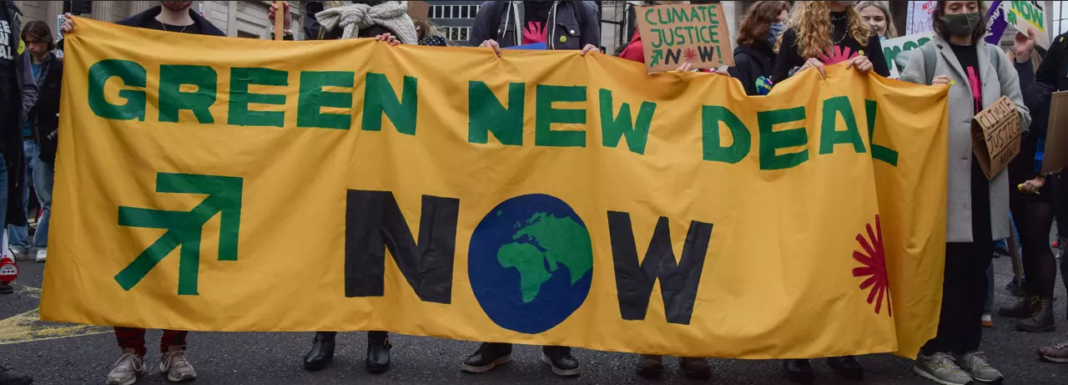CJ POLYCHRONIOU|
SOLVING global warming is humanity’s greatest challenge. It can be done, but it is exceedingly difficult as it requires a fundamental restructuring of the world economy.
There are, for all intents and purposes, three paths of restructuring the global economic order in order to keep catastrophic climate change at bay: (a) dismantle capitalism; (b) shrink dramatically economic activity; and (c) implement a Global Green New Deal.
We have both the technological know-how and the economic resources to make the transition to a “green economy.” The only thing that’s missing from making this happen is the political will.
The first path is hardly realistic at the current juncture. Socialists everywhere are in retreat, while socialism continues to have multiple meanings and interpretations. There is not a single place on earth where a socialist revolution is brewing.
In this context, I think we can safely say that the dismantlement of global capitalism through a world socialist revolution is nothing more than fantasy.
The second path is almost equally unrealistic, as well as exceedingly dangerous. This is what may be called as the “lazy” approach to tackling the climate crisis. A dramatic contraction of economic activity will lead to mass unemployment, rise in poverty to unprecedented levels, political instability, and social chaos.
Neither rich nor poor nations will benefit from intentional policies to shrink economic activity, and surely no one can imagine any government in any part of the world embarking on such an undertaking in hopes that it will help save the planet from the menace of global warming due to anthropogenic greenhouse gas emissions.
More important, reducing global economic activity won’t save the planet from global warming.
As economist Robert Pollin has argued in Climate Crisis and the Global Green New Deal: The Political Economy of Saving the Planet (co-authored with Noam Chomsky), even if global GDP were to contract by 10 percent over the next 10 years (which, incidentally, would be several times larger than what was experienced over the global financial crisis of 2007-09), carbon dioxide emissions would be pushed down by precisely 10 percent (p. 117).
So the world economy remains far away from reaching zero emissions, while workers suffer massive damage to their livelihoods.
The third path, the implementation of a Global Green New Deal, is the only realistic one for humanity to avert a catastrophic climate breakdown.
A Global Green New Deal is essentially a call on all governments around the world to use the power of state intervention to halt global warming by stopping fossil fuel emissions and making a transition to clean and renewable sources of energy.
The Green New Deal will stimulate the economy while eliminating the bad side of growth.
We have both the technological know-how and the economic resources to make the transition to a “green economy.”
The only thing that’s missing from making this happen is the political will—in spite of so many international climate summits having taken place so far.
Indeed, at COP26, the lack of political will among the world’s leaders to take drastic action to combat the climate crisis is more than obvious and incredibly disconcerting.
“Tough talk,” but no commitment to a Global Green New Deal, which is why thousands of protesters took to the streets in Glasgow during the COP26 conference.
As things stand, the most promising way out of the impasse lies with revolutionary activism.
Change, as always, will take place from the bottom up.
Indeed, a Global Green New Deal will materialize only when citizens of the world demand it.
- Common Dreams



